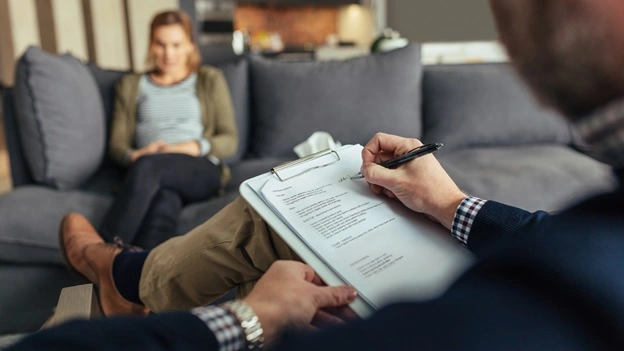Have you ever recalled being opposite a client who is speaking for hours non-stop, every uttered word carrying frustration or fear, anger or sadness, doubts, and uncertainty? At such a time, a therapist goes beyond being a listener; they are entrusted with the responsibility of telling some of the most significant occurrences in life as the events unfold during the session.
But amid the weakness of the human condition, how does he capture these glorious moments in a manner that does not allow them to be locked away in a box labeled ‘crafts’? Ideally, it’s not just about notes. They have to contain messages of hope, and combined messages of healing that must correlate to presenting issues and reflect the nature of each client’s suffering.
A Guide to the Importance of Therapy Notes
Let’s first consider the pivotal role that notes play in mental health therapies. These are also referred to as therapy notes or progress notes. These are a documented form of all the sessions, the action plan, the evaluation, and the overall mapped-out plan.
It is central in charting the progress of a client over time, keeping records of the treatment process, and ensuring that there is an effective transfer of information between the different practitioners handling the same client.
Therapists’ Note-Making: The Benefits of Clarity
Clear and concise therapy notes are essential for several reasons:
Communication

Therapy notes are some kind of record documentation that helps the communication between therapists, clients, and other doctors. Detailed and contemporaneous therapy notes make it possible for all the concerned staff to have an insight into the client’s condition, improvement, and treatment goals. It also outlines the planned care they have regarding the patient.
Continuity of Care
Contemporaneous notes are important in making communication with other therapists and other healthcare professionals in the patient’s treatment. Clarity, facilitated by clear notes from prior sessions, guides the returning clinician during transitions between providers.
Legal Protection
Documentation of therapy notes is highly important because it serves as a legal defense in cases of dissensions, grievances, or even litigations. They help to show the dates the client was given care, measures that were taken, and the improvement the client had which protects therapists from probable legal claims.
Highly Effective Strategies for Writing Accurate and Concise Therapy Notes
Utilize a Structured Format

Structured writing for therapy notes can improve the understanding and organization of treatment plan samples. It may be helpful to use a standard format that has sections for basic information like the client’s age and gender, the date of the session, client concerns, interventions, the client’s progress, and the proposed new treatment plan.
Be Objective and Descriptive
While writing down client sessions, it is important not to bias the writing and instead record the events, actions, or remarks that objectively take place. Avoid making assumptions or trying to read into something that is not evident, especially when dealing with the client. Instead of writing that ‘Client seemed anxious’ write, ‘Client spoke rapidly, was fidgeting, and had trouble focusing.
Avoid using Complex Sentences and Jargon
Provide information in your therapy notes in a simple manner and avoid complicated terminologies. Do not use technical languages, abbreviations, or complicated words that may not be understood easily by others. Try to be concise and clear, making sure that anyone reading the notes will understand them, and, if necessary, the client too.
Focus on Key Points

However, when recording important information in the notes it is professional to avoid adding unnecessary information or irrelevant side stories. It is important to note key issues considered concerning presenting complaints, progress made, and often interventions and changes to the plan. Explain the situation easily and focus only on the most vital information.
Review and Revise Regularly
It is important and advisable to go through the summary of the therapy notes frequently. Reread what you have written, checking for typographical errors, omissions, or insertions, and edit as necessary. Periodically checking through the notes not only does this but also strengthens your mind as to the progress of the client and the goals of the treatment.
Maintain Confidentiality
Maintaining client-patient privilege is even more important in taking notes in a therapeutic context. Make sure that your notes are protected and only reviewed by those people who will be handling the client. Do not disclose the patient’s identifying information such as full name, address, or any other information that may be a violation of the patient’s privacy.
Incorporating Examples and Templates into Your Note-Taking Process
Incorporating examples and templates into your note-taking process can further streamline your efforts toward clarity and conciseness. Let’s explore how you can integrate psychotherapy progress notes examples, psychotherapy notes examples, counselor notes examples, progress note templates, and mental health progress notes into your practice:
Psychotherapy Progress Notes Examples
Consider studying examples of well-crafted psychotherapy progress notes to gain insight into effective note-taking techniques. Analyze how other therapists structure their notes, describe interventions, and track client progress. By studying examples, you can identify strategies that resonate with your style and incorporate them into your practice.
Psychotherapy Notes

Similarly, reviewing psychotherapy notes examples can provide valuable inspiration for improving your note-taking skills. Look for examples that demonstrate clarity, objectivity, and concise language. Pay attention to how therapists convey complex concepts in simple terms and adapt these techniques to suit your documentation style.
Counselor Notes Examples
Exploring counselor note examples can offer additional perspectives on effective note-taking practices. Counselor notes may focus on specific interventions or therapeutic modalities, providing valuable insights into different approaches to documentation. Studying counselor notes examples, improves your strategies and notes-taking to address clients’ requirements.
Progress Note Template
Creating note templates can standardize and streamline the note-taking process, ensuring consistency with progress notes. They include sections like session details, client characteristics, issues addressed, interventions, progress, and plans, saving time compared to non-template methods.
Mental Health Progress Note
Using mental health progress notes as a part of practice may prove useful when it comes to assessing the general client’s status and possible additional needs for treatment. The progress notes generally denote the client’s emotional state, changes or manifestations of symptoms, and response to treatment.
If you make use of the mental health progress note in your documentation process, you will be able to incorporate the client’s mental health status in his or her treatment plan and chart progress in the mental health aspect throughout the period the client receives the services.
Therapy Notes Templates Comparison
| Features | Standard Template | Mental Health Progress Notes |
| Session Details | Includes session date, duration, location, and participants | Captures session date, time, setting, and client’s emotional state |
| Client Characteristics | Collects demographic information such as age, gender, and contact details | Highlights client’s mental health history, diagnoses, and current medications |
| Presenting Issues | Records client’s primary concerns or reasons for seeking therapy | Documents the client’s symptoms, triggers, and areas of distress |
| Interventions Used | Details of therapeutic techniques or interventions applied during the session | Lists specific therapeutic modalities, techniques, or exercises utilized |
| Client Progress | Tracks client’s progress, insights gained, and changes observed since the last session | Evaluates client’s response to treatment, symptom severity, and improvements over time |
| Treatment Plan Updates | Updates treatment plan based on client progress and therapist’s clinical judgment | Adjusts treatment goals, interventions, or referrals based on client’s evolving needs |
Conclusion
Writing clear and precise therapy notes is a skill that requires continuous refinement. By implementing the recommendations of this guide and using examples and templates for notes, you can improve the quality and relevance of the notes taken.
Remember, notes are vital for aiding clients in their therapy journey and for coordinating and sharing care details with other practitioners. Through discipline and focus, you can craft comprehensive, accurate, yet concise notes, enhancing clients’ well-being.
FAQs
- Why should therapists use templates for therapy notes?
Using templates standardizes the note-taking process, ensures consistency, and saves time by providing a structured format for documentation. Templates also help in capturing essential information systematically.
- What are some effective strategies for writing therapy notes?
Utilize a structured format, be objective and descriptive, avoid complex sentences and jargon, focus on key points, review and revise regularly, and maintain confidentiality to write effective therapy notes.
- Why is maintaining confidentiality in therapy notes important?
Maintaining confidentiality in therapy notes is crucial to protecting client privacy and adhering to legal and ethical standards. Secure and private notes ensure that only authorized personnel access sensitive information, safeguarding client trust and maintaining professional integrity.
For more related information, explore our website here.









